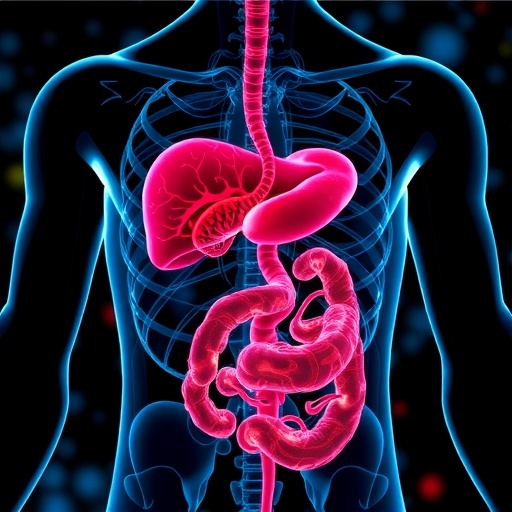Recent research emphasizes the critical role of PPARγ (Peroxisome Proliferator-Activated Receptor gamma) in safeguarding against nonalcoholic steatohepatitis (NASH), a condition that can progress to severe liver diseases and liver failure. The study, conducted by Wu, Chu, and Lam, highlights how PPARγ serves as a pivotal regulator of liver metabolism and fat storage, thereby preventing the inflammatory processes associated with NASH. This research could provide a framework for developing therapeutic strategies to combat NASH and related conditions, which are becoming increasingly common in the global population.
NASH is characterized by the accumulation of fat in the liver, leading to inflammation and damage. It is part of a spectrum of diseases known as nonalcoholic fatty liver disease (NAFLD). As the prevalence of obesity and type 2 diabetes rises globally, the incidence of NASH is expected to rise correspondingly, making it a pressing public health concern. The findings from this recent study underscore the necessity to explore molecular pathways in NASH and highlight PPARγ’s potential for therapeutic intervention.
PPARγ plays an essential role in lipid metabolism and glucose homeostasis. It is a member of the nuclear receptor superfamily, functioning as a transcription factor that modulates gene expression involved in the metabolism of fats and sugars. The activation of PPARγ leads to the differentiation of adipocytes, enhances insulin sensitivity, and regulates the release of cytokines. The implications of PPARγ activation extend far beyond metabolic regulation, pointing towards its significance in combating liver diseases such as NASH.
The research by Wu et al. involved a series of genetic and pharmacological studies in animal models, elucidating the protective effects of PPARγ against liver inflammation and damage. By utilizing knockout models where PPARγ expression was selectively ablated, the researchers successfully demonstrated a marked increase in liver steatosis and inflammation, signaling the crucial role of this protein in liver health. Moreover, pharmacological activation of PPARγ was shown to significantly attenuate liver injury and promote a healthier metabolic profile in these models.
Intriguingly, the study identifies the complex interactions between dietary factors and PPARγ activity. The introduction of a high-fat diet led to the aggravated liver condition in PPARγ knockout models, while the pharmacological activation of PPARγ improved hepatic steatosis, indicating that lifestyle modifications, alongside potential drug treatments targeting PPARγ, could offer a dual approach to managing NASH. Given the multi-faceted nature of NASH, this insight may pave the way for comprehensive approaches that incorporate dietary control alongside pharmacotherapy.
The researchers also commented on the broader implications of their findings for public health and clinical practice. As NASH is often asymptomatic until severe liver damage occurs, early detection and intervention are crucial. Understanding PPARγ’s role could lead to novel biomarkers for early diagnosis, allowing for timely implementation of lifestyle modifications or pharmacological treatments to prevent the progression of liver disease.
Further, potential therapeutic agents targeting PPARγ signaling pathways are being evaluated. The development of specific PPARγ agonists could offer promising avenues for treatment. Current diabetes medications that activate PPARγ, such as thiazolidinediones, showcase the therapeutic potential of manipulating this signaling pathway for liver conditions. However, careful consideration is needed, as these agents can have significant side effects, which necessitates further research to ensure efficacy and safety.
The findings of this study extend beyond liver health, hinting at a potential link between PPARγ activity and systemic metabolic health. Given that NASH often coexists with metabolic syndromes, modulation of PPARγ could ameliorate symptoms not only related to liver health but also those associated with obesity and insulin resistance. This multi-target effect could significantly improve overall healthcare outcomes for patients suffering from metabolic disorders.
As the research continues to develop, it is vital for clinicians, researchers, and public health officials to stay abreast of these findings and their implications for prevention and treatment strategies. The integration of basic research into clinical practice remains paramount in addressing complex diseases such as NASH. Future studies that expand on these results could illuminate additional pathways and mechanisms through which PPARγ operates, yielding more targeted interventions.
In conclusion, the work presented by Wu, Chu, and Lam marks a significant advancement in our understanding of nonalcoholic steatohepatitis and the protective role of PPARγ. It reaffirms the necessity of investigating molecular pathways involved in metabolic diseases while emphasizing the importance of a multidisciplinary approach in both research and clinical application. The protective effects observed in this study could serve as a catalyst for future research aimed at developing efficacious treatments for a growing population afflicted by NASH.
As we continue to unravel the complexities of diseases influenced by metabolic factors, findings such as these inspire hope and pave the way for improved therapeutic options that could ultimately change the prognosis for countless individuals suffering from liver diseases globally.
In summary, as the battle against NASH intensifies, the focus on PPARγ as a protective agent offers a beacon of hope. The insights garnered from this research not only enhance our understanding of liver metabolism and disease but also unearth novel opportunities for therapeutic intervention that could benefit millions at risk of developing severe liver pathologies.
This study serves as a reminder of the importance of fundamental research in tackling epidemiologic challenges and underscores the need for continued investment in the exploration of metabolic pathways. As researchers build upon these findings, the potential for groundbreaking treatments comes into clearer focus, underscoring the relevance of studies targeting PPARγ in the ongoing fight against nonalcoholic steatohepatitis.
Subject of Research: The protective role of PPARγ in nonalcoholic steatohepatitis.
Article Title: Correction: PPARγ is essential for protection against nonalcoholic steatohepatitis.
Article References:
Wu, C.W., Chu, E.S.H., Lam, C.N.Y. et al. Correction: PPARγ is essential for protection against nonalcoholic steatohepatitis.
Gene Ther (2025). https://doi.org/10.1038/s41434-025-00568-z
Image Credits: AI Generated
DOI:
Keywords: PPARγ, nonalcoholic steatohepatitis, liver disease, metabolic health.
Tags: gene expression in lipid metabolismglobal prevalence of NASH.inflammatory processes in NASHliver metabolism and fat storagemolecular pathways in liver diseasesnonalcoholic fatty liver disease researchobesity and type 2 diabetes link to NASHPPARγ as transcription factorPPARγ role in nonalcoholic steatohepatitispreventing liver inflammation and damagepublic health concern of NASHtherapeutic strategies for NASH





